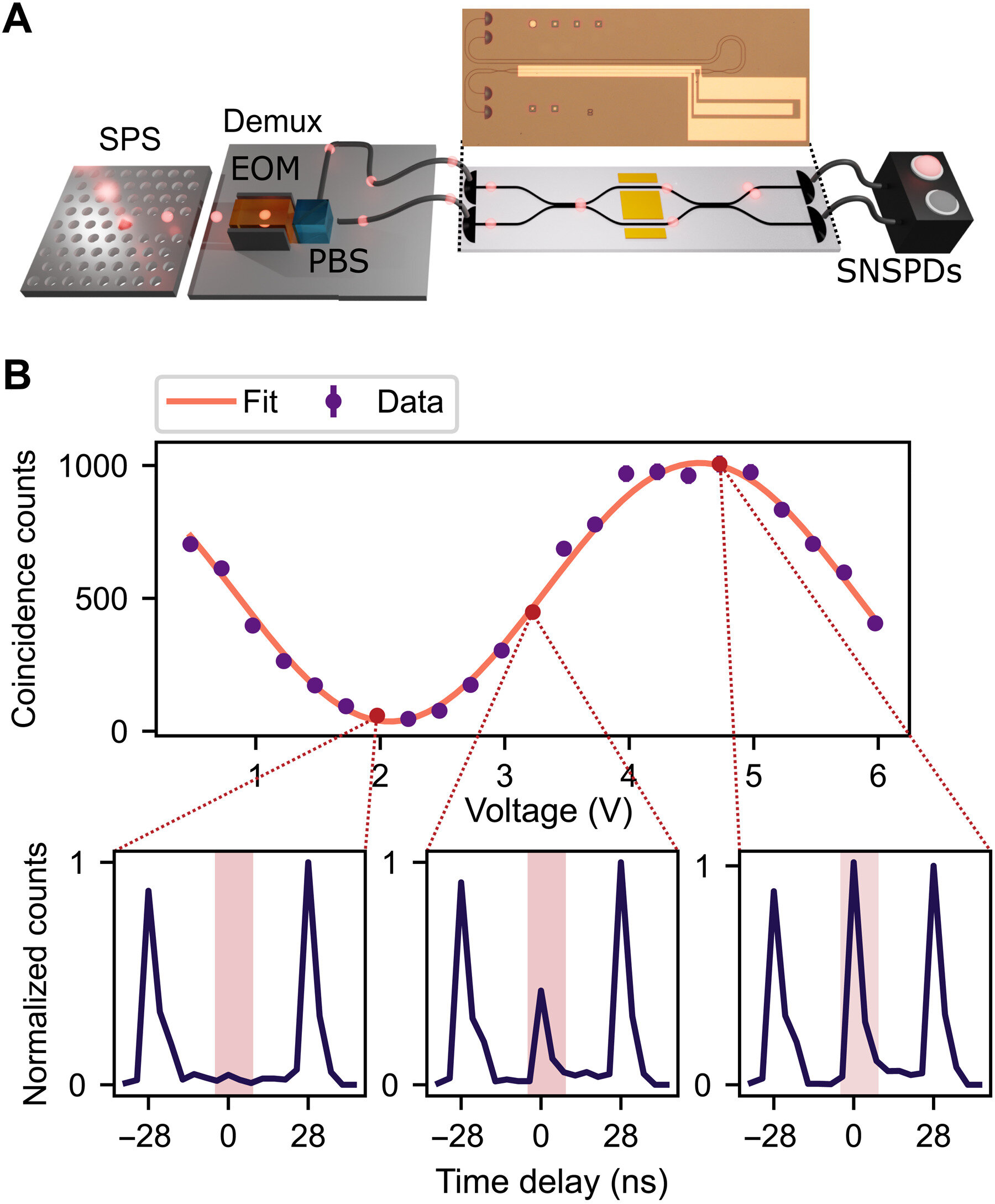In the world of quantum computing, it is important to have scalable photonic quantum computing architectures that rely on low-loss, high-speed, reconfigurable circuits and near-deterministic resource state generators. Recently, in a report published in Science Advances, Patrik Sund and his team at the center of hybrid quantum networks at the University of Copenhagen and the University of Münster have developed an integrated photonic platform with thin-film lithium niobate that offers promising potential for scalable quantum technologies.
Details of the Study
The scientists integrated the platform with deterministic solid-state single photon sources using quantum dots in nanophotonic waveguides. They processed the generated photons within low-loss circuits at speeds of several gigahertz and experimentally realized a variety of key photonic quantum information processing functionalities on high-speed circuits, with inherent key features to develop a four-mode universal photonic circuit.
In recent years, quantum technologies have advanced to enable quantum hardware to compete with and surpass the capabilities of classical supercomputers. However, regulating quantum systems at scale for a variety of practical applications and forming fault-tolerant quantum technologies is a significant challenge.
Photonics offer a promising platform to unlock scalable quantum hardware for long-range quantum networks with interconnections across multiple quantum devices and photonic circuits for quantum computing and simulation experiments. Researchers have recently developed solid-state quantum emitters such as quantum dots as near-ideal, high-efficiency sources of indistinguishable photons to realize on-demand single-photon sources.
During this study, Sund and colleagues focused on single-crystal lithium niobate thin films bonded on a silica insulating substrate as a promising platform due to their strong electrical-optical properties, high transparency and high index contrast to form integrated circuits. Since the transparency range of the materials varied, they were well-suited to function with a variety of solid-state quantum emitters, with compatibility to function at cryogenic temperatures.
The team described the development of multimode lithium niobate on insulator circuits for quantum information processing at the single photon level for the first time, using the circuits to regulate and facilitate the function of quantum states of light emitted from a quantum dot single-photon source.
The team injected single photons emitted by a waveguide-integrated quantum dot source into the lithium niobate optical circuit to show key functionalities underlying photonic quantum information processing, such as multiphoton interference on a reconfigurable universal unitary circuit.
Sund and colleagues illustrated the geometry used to realize single-mode lithium niobate on insulator waveguides. They implemented the optical circuits as rib waveguides via electron-beam lithography and argon etching on a lithium niobate film bonded on a silica-on-silicon substrate.
During photonic quantum information processing, the researchers investigated the visibility of multiphoton quantum interference through on-chip Hong-Ou-Mandel experiments to test the performance of the platform for photonic quantum information processing. The materials scientists generated single photons by using a self-assembled indium arsenide quantum dot embedded in a photonic and electronic nanostructure.
The team made use of deterministic quantum emitters by rotating streams of emitted photons for networking schemes to reduce costs in photonic quantum computing architectures. The research team integrated fast phase shifters on lithium niobate platforms and displayed on-chip photon routers for quantum-dot emitted photons.
The scientists then compared the measured distributions from experimental data with theoretical predictions. In this way, Patrik Sund and colleagues displayed the promise of lithium niobate on insulator platforms to process photons from emerging solid-state deterministic sources. The platform can be further optimized for scalable quantum technologies.
The development of an integrated photonic platform with thin-film lithium niobate by Patrik Sund and his team at the center of hybrid quantum networks at the University of Copenhagen and the University of Münster offers promising potential for scalable quantum technologies. With the potential to unlock scalable quantum hardware for long-range quantum networks with interconnections across multiple quantum devices and photonic circuits for quantum computing and simulation experiments, this platform can be further optimized for scalable quantum technologies.



Leave a Reply